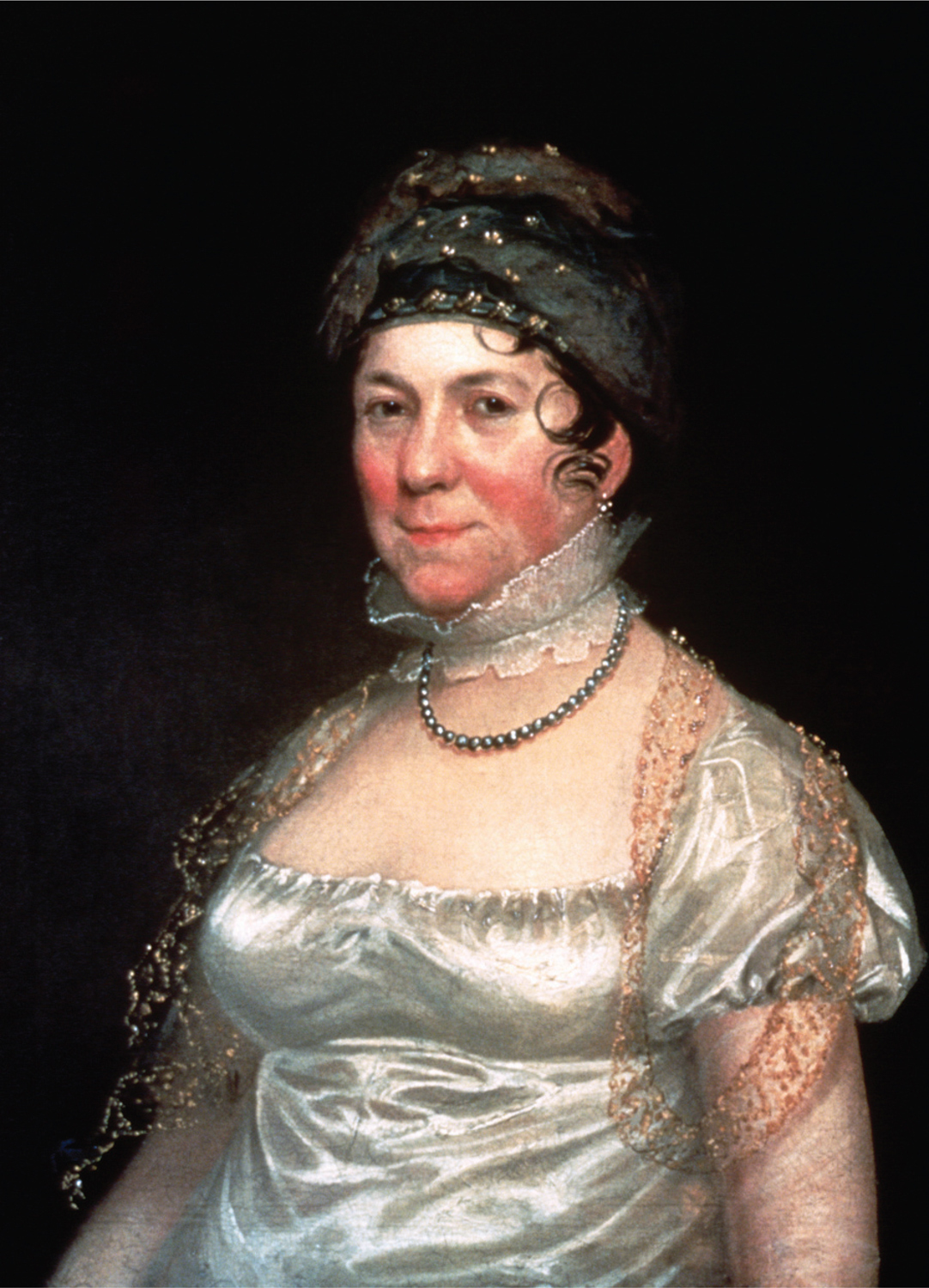Dolley Madison and Social Politics

VISUAL ACTIVITY Dolley Madison, by Rembrandt Peale The “presidentress” of the Madison administration sat for this portrait in 1817 when she was close to fifty and just exiting from the White House. She wears a fashionable satin empire waist dress featuring a low-cut bodice and flowing gown that dropped from the high waistline straight to the ground. Mrs. Madison was noted for her unusual turbans and her unfailing good cheer, as her impish smile conveys. ©Bettmann/Corbis. READING THE IMAGE: Does the scarf around her shoulders appear to have a functional value for this outfit? Is there any function associated with the collar around her neck? CONNECTIONS: What kind of role were female relatives of politicians expected to play in the early Republic?
Although women could not vote and supposedly left politics to men, the female relatives of Washington politicians took on several overtly political functions that greased the wheels of the affairs of state. They networked through dinners, balls, receptions, and the intricate custom of “calling,” in which men and women paid brief visits at each other’s homes. Webs of friendship and influence in turn facilitated female political lobbying. It was not uncommon for women in this social set to write letters of recommendation for men seeking government work.
Dolley Madison developed elaborate social networks during Jefferson’s presidency that were of great benefit during her husband’s administration. Called by some the “presidentress,” Mrs. Madison struck a balance between queenliness and republican openness. She dressed the part in resplendent clothes, and she opened three elegant rooms in the executive mansion for a weekly open-house party called “Mrs. Madison’s crush” or “squeeze.” In contrast to George and Martha Washington’s stiff, brief receptions, the Madisons’ parties went on for hours, with scores or even hundreds of guests milling about, talking, and eating. Members of Congress, cabinet officers, distinguished guests, envoys from foreign countries, and their wives attended with regularity. Mrs. Madison’s weekly squeeze was an essential event for gaining political access, trading information, and establishing informal channels that would smooth the governing process.
In 1810–1811, the Madisons’ house acquired its present name, the White House. The many guests experienced simultaneously the splendor of the executive mansion and the atmosphere of republicanism that made it accessible to so many. Dolley Madison, ever an enormous political asset to her rather shy husband, understood well the symbolic function of the White House to enhance the power and legitimacy of the presidency.
